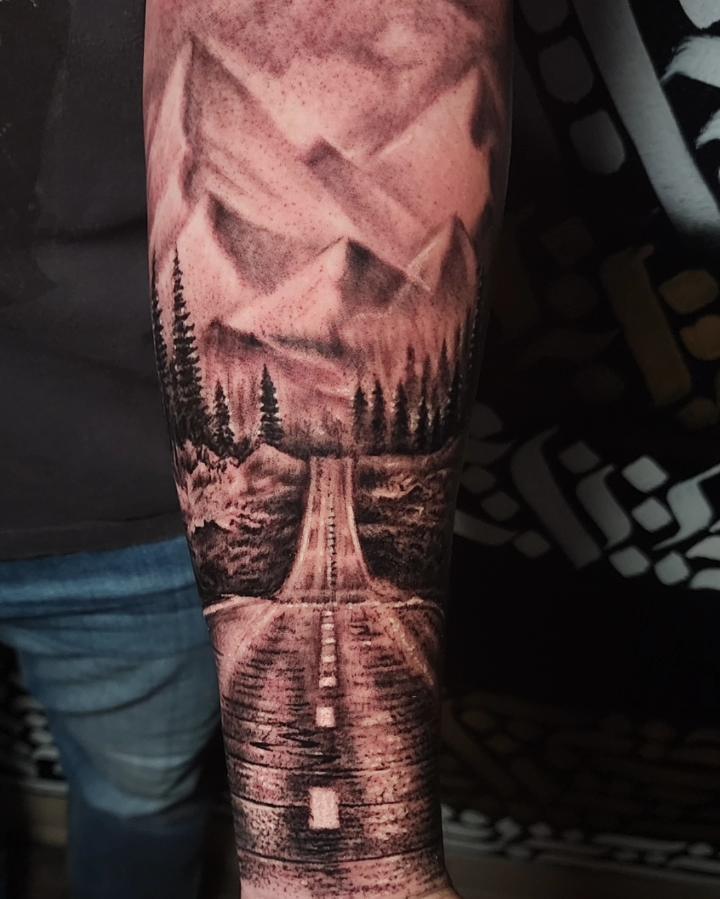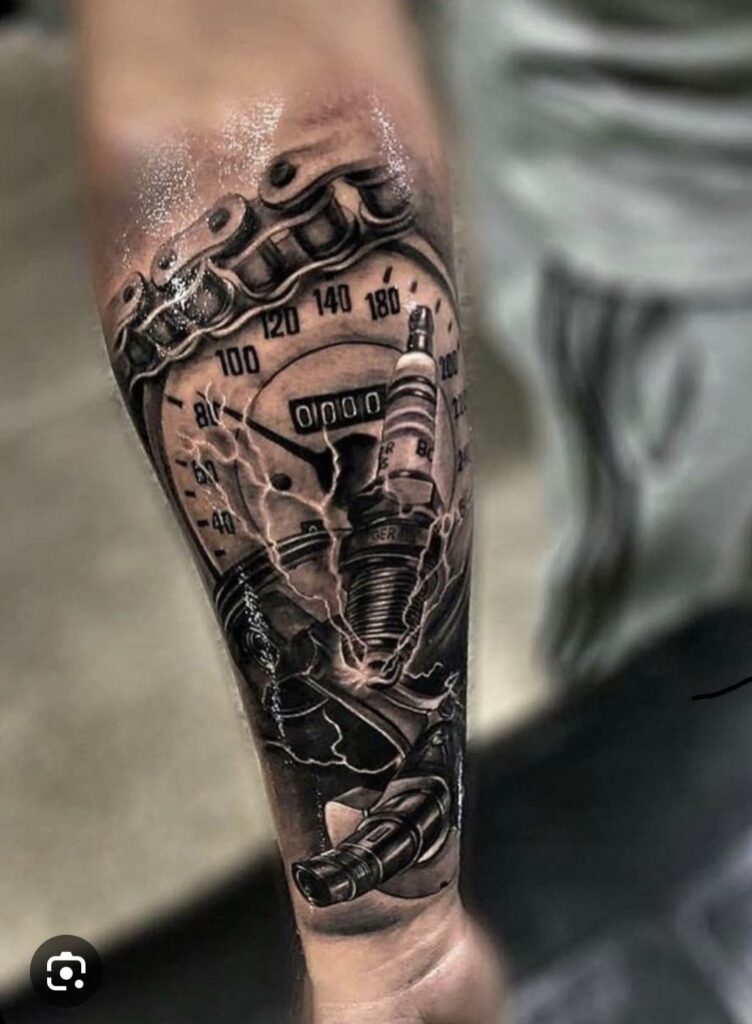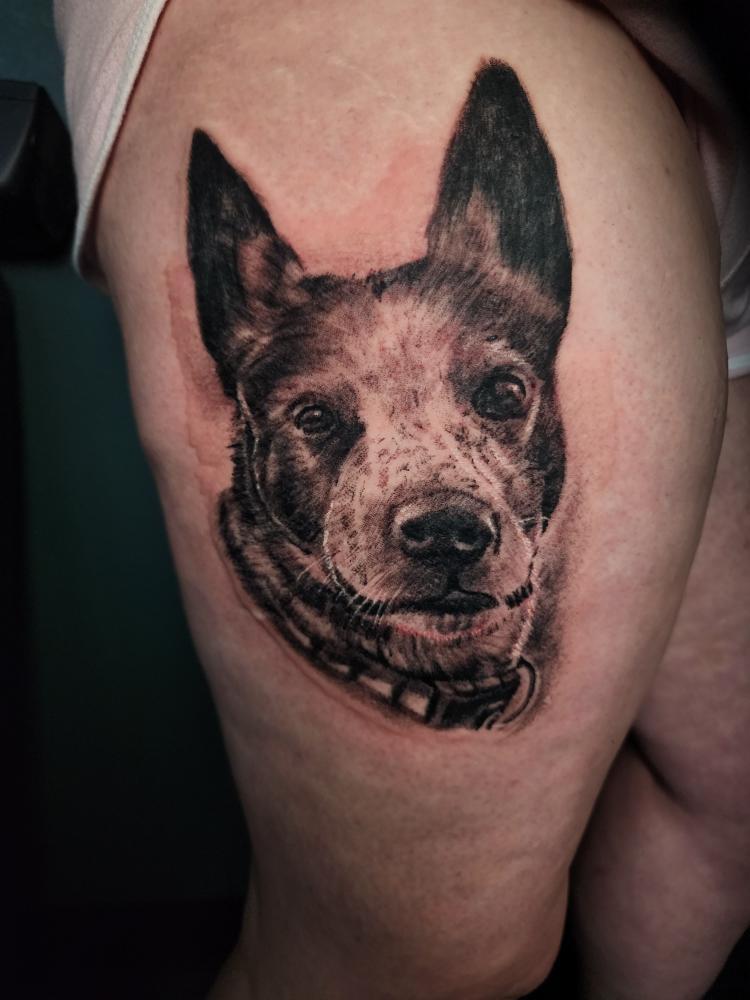How to Care for Your New Tattoo: Expert Advice for Long-Lasting Ink
 Proper tattoo aftercare is a crucial step in ensuring the longevity and vibrancy of your new ink. Often under-emphasized, the responsibility comes after the exhilaration of designing, choosing, and getting your tattoo. This guide will arm you with expert advice and proven methods to protect your tattoo and enhance its life. Keep reading to learn the best practices for tattoo aftercare that will help maintain the art you’ve chosen to adorn your skin.
Proper tattoo aftercare is a crucial step in ensuring the longevity and vibrancy of your new ink. Often under-emphasized, the responsibility comes after the exhilaration of designing, choosing, and getting your tattoo. This guide will arm you with expert advice and proven methods to protect your tattoo and enhance its life. Keep reading to learn the best practices for tattoo aftercare that will help maintain the art you’ve chosen to adorn your skin.
Understanding the Tattoo Healing Process
The healing process of a tattoo is a crucial period that can significantly impact the final appearance of your ink. Immediately after getting your tattoo, your skin starts working to repair the dermal damage. The process can be broken down into three main stages.
Firstly, the initial healing stage occurs in the first week, when the tattooed area behaves like an open wound. You’ll experience weeping of excess ink and plasma, and the skin may feel sore and red.
Next is the peeling phase, normally beginning around day five and lasting up to two weeks. During this period, the tattoo may appear cloudy or dull as the skin begins to flake off, similar to a sunburn.
The final stage is long-term healing, which can last up to a few months. In this phase, your skin is still repairing, working to heal the deeper layers affected. Proper care during each of these stages will ensure your tattoo heals well, keeping its design sharp and colors vibrant.
Essential Steps for Initial Tattoo Aftercare
During the initial aftercare stage, cleanliness and hydration are critical. To start, gently clean the tattooed area with a mild, fragrance-free soap and warm water. Avoid scrubbing or using a washcloth, which can irritate the skin. Instead, use your fingers to lightly cleanse the area. After cleaning, pat dry the tattoo with a clean, soft towel – don’t rub it. This should be done 2-3 times a day, especially in the first few days when weeping is common.
Next, apply a thin layer of fragrance-free moisturizing cream or specialized tattoo aftercare ointment. This helps keep the skin hydrated and promotes healing. Be cautious not to drown the tattoo in the cream; a thin layer is enough. Avoid using any products that contain irritants like alcohol, which can delay healing.
Lastly, let your tattoo breathe. Avoid covering it with tight clothing and keep it exposed to fresh air as much as possible. However, avoid direct sunlight and tanning, as UV rays can fade the tattoo’s color and cause skin damage. Always remember, that the initial aftercare period is critical, and proper care can significantly enhance the longevity and vibrancy of your tattoo.
The Importance of Hydration in Tattoo Aftercare
Hydration plays a key role in tattoo aftercare, both internally and externally. Drinking plenty of water helps your body heal faster, detoxifies your system, and maintains the elasticity and health of your skin. Hydrated skin holds tattoo ink better, helps to prevent scabbing, and keeps your tattoo looking vibrant longer.
Externally, keeping the tattooed skin moisturized is equally essential. Regular application of moisturizing cream or ointment keeps the skin supple and helps to prevent dryness and flaking. A well-hydrated tattoo can heal more efficiently and maintain its color and sharpness, ensuring your ink continues to look its best for a longer period. However, be aware of over-moisturizing, which can lead to clogged pores and hinder the healing process. As with all aspects of tattoo aftercare, balance is key.
Tips to Protect Your Tattoo from Sun Damage
A common misconception is that once your tattoo is completely healed, it’s impervious to external damage. This is far from the truth. One of the biggest threats to the vibrancy and longevity of your tattoo is sun exposure. Prolonged exposure to the sun’s harmful UV rays can cause your tattoo to fade and lose its sharpness over time.
To protect your tattoo from sun damage, consider the following tips:
- Use Sunscreen: Once your tattoo is fully healed, apply a broad-spectrum sunscreen with at least SPF 30 before exposing your skin to the sun. Make sure to apply a generous amount and reapply every two hours, or immediately after swimming or excessive sweating.
- Wear Protective Clothing: Clothing can provide an additional layer of protection. Opt for clothing items that cover your tattoo when out in the sun for long periods.
- Limit Sun Exposure: Try to limit your exposure to the sun, especially during peak hours (between 10 a.m. and 4 p.m.). Remember, the sun’s rays are strongest during this period, increasing the risk of damage to your tattoo.
Adopting these measures can significantly safeguard your tattoo from sun damage, keeping your tattoo vibrant and crisp for years to come. Remember, tattoo aftercare is an ongoing process that extends well beyond the initial healing period.
How to Safely Clean Your New Tattoo
Cleaning your new tattoo properly is crucial to prevent infection and ensure optimal healing. Here are some steps to help you safely clean your new tattoo:
- Wash Your Hands: Before touching your new tattoo, ensure your hands are clean. Wash them thoroughly with a mild soap to remove any dirt or bacteria.
- Prepare Warm Soapy Water: Fill a basin with warm water. Avoid hot water as it can open the pores and cause ink to leach out. Add a small amount of mild, fragrance-free soap to the water.
- Gently Clean the Tattoo: Dip a soft, clean cloth into the soapy water and gently cleanse the tattooed area. Do not scrub or rub the tattoo; instead, use gentle, circular motions.
- Rinse Thoroughly: After cleaning, rinse the tattoo with lukewarm water. Ensure all soap residues are removed as these can potentially cause irritation.
- Pat Dry: Use a clean, dry towel to gently pat the tattoo dry. Do not rub or scrape the tattoo with the towel as this could cause damage.
- Let it Breathe: Allow your tattoo to air dry for a few minutes before applying any moisturizer or ointment.
Remember, cleaning your new tattoo should be done 2-3 times a day, especially during the first week of healing. However, excessive cleaning can dry out the tattoo and slow down the healing process. As always, balance is key in effective tattoo aftercare.



Choosing the Right Tattoo Aftercare Products
Selecting appropriate aftercare products is an integral part of ensuring the longevity of your tattoo. Here are some guidelines to assist you in making the right choice:
- Healing Ointments: During the initial healing phase, opt for healing ointments like Aquaphor or A&D. They are designed to keep the tattoo moist, promote healing, and reduce scabbing.
- Fragrance-free Lotions: Once the initial healing phase is over, switch to a fragrance-free lotion like Lubriderm or Aveeno. They are less thick compared to ointments and provide adequate moisture to the skin without clogging pores.
- Tattoo-specific Products: Several products are tailored specifically for tattoo aftercare like “Tattoo Goo” or “After Inked.” These products are enriched with vitamins and herbs for promoting skin healing and maintaining the vibrancy of the tattoo.
- Sunscreen: Choose a broad-spectrum sunscreen with an SPF of 30 or above to protect your tattoo from fading and damage caused by the sun.
- Soaps: Opt for mild, fragrance-free soaps for cleaning your tattoo. These soaps are less likely to irritate compared to scented or antibacterial ones.
Remember, every person’s skin responds differently, so you may need to try different products before finding the one that works best for you. Always do a patch test before applying a new product to your tattoo to make sure you don’t have any allergic reactions. With the right products in your tattoo aftercare arsenal, you can ensure your tattoo remains vibrant and healthy for years to come.
Common Tattoo Healing Issues and How to Address Them
Tattoos, though a form of art, are also a type of wound, and like any other wound, they can sometimes experience complications during the healing process. Here are some common tattoo healing issues and how to address them:
- Infection: Signs of infection include redness, swelling, warmth, and pus. If you suspect an infection, seek immediate medical attention. Do not attempt to treat a suspected infection with over-the-counter medications.
- Allergic Reaction: Allergic reactions to tattoo ink can occur, though it’s rare. Look out for signs like rash, hives, or severe itching. If you experience these symptoms, consult with a dermatologist.
- Scabbing and Peeling: Some scabbing and peeling is normal. However, excessive or large flaky scabs may be a sign that your tattoo isn’t healing properly. Avoid picking or scratching at the area. Continue to moisturize and consult a professional if you’re concerned.
- Fading or Blurring: Over time, some fading or blurring is natural, but if it happens soon after getting your tattoo, it may be a sign that you’re not following the correct aftercare procedures or your tattoo artist didn’t do a good job. Consult with a reputable tattoo artist for advice.
- Blowout: A tattoo blowout happens when the ink spreads beneath the skin, causing a blurred effect. Unfortunately, there’s no easy fix for tattoo blowouts. If you experience this issue, consult with a professional tattoo artist for possible solutions.
Remember, your tattoo is a permanent part of your body. Taking proper care of it during the healing process helps ensure that it looks its best for years to come. When to Seek Professional Medical Help While taking care of your new tattoo at home is possible, there are situations where you should seek professional medical help. If you notice signs of an infection such as persistent redness, swelling, warmth, and pus, or experience severe pain, it’s crucial to consult a doctor immediately. Allergic reactions to the tattoo ink, although rare, also warrant a visit to a dermatologist. Unusual scabbing, peeling, or bleeding that doesn’t resolve itself after a few days should be evaluated by a healthcare professional as well. If you’re unsure whether a symptom is normal or cause for concern, it’s always better to err on the side of caution and get it checked out. Your health should always be your top priority, and early intervention can prevent potential complications.
Tattoo aftercare is a critical aspect of the tattooing process, and it’s as important as selecting the right design and artist. Proper care and attention to the healing tattoo not only ensure its aesthetic appeal but also prevent potential complications like infections or allergic reactions. A comprehensive routine, including gentle cleansing, appropriate moisturizing, use of tattoo-friendly products, and protection from UV rays, can significantly enhance the longevity and vibrance of your tattoo. Remember, if you encounter any issues during the healing process, it’s best to consult a medical professional promptly. Your tattoo is a reflection of your individuality; take care of it, and it will continue to be a source of pride for years to come.
